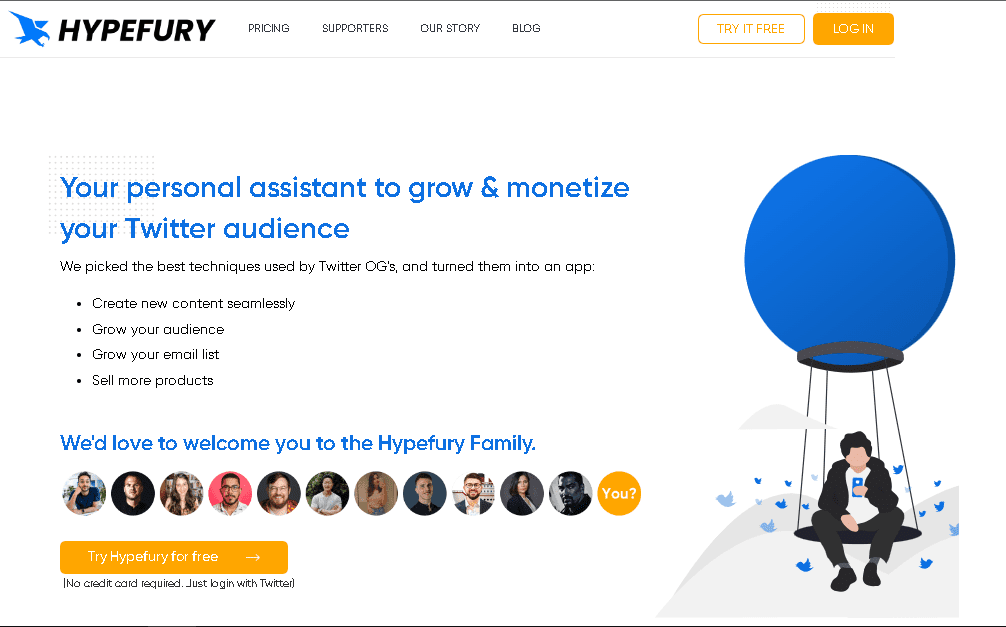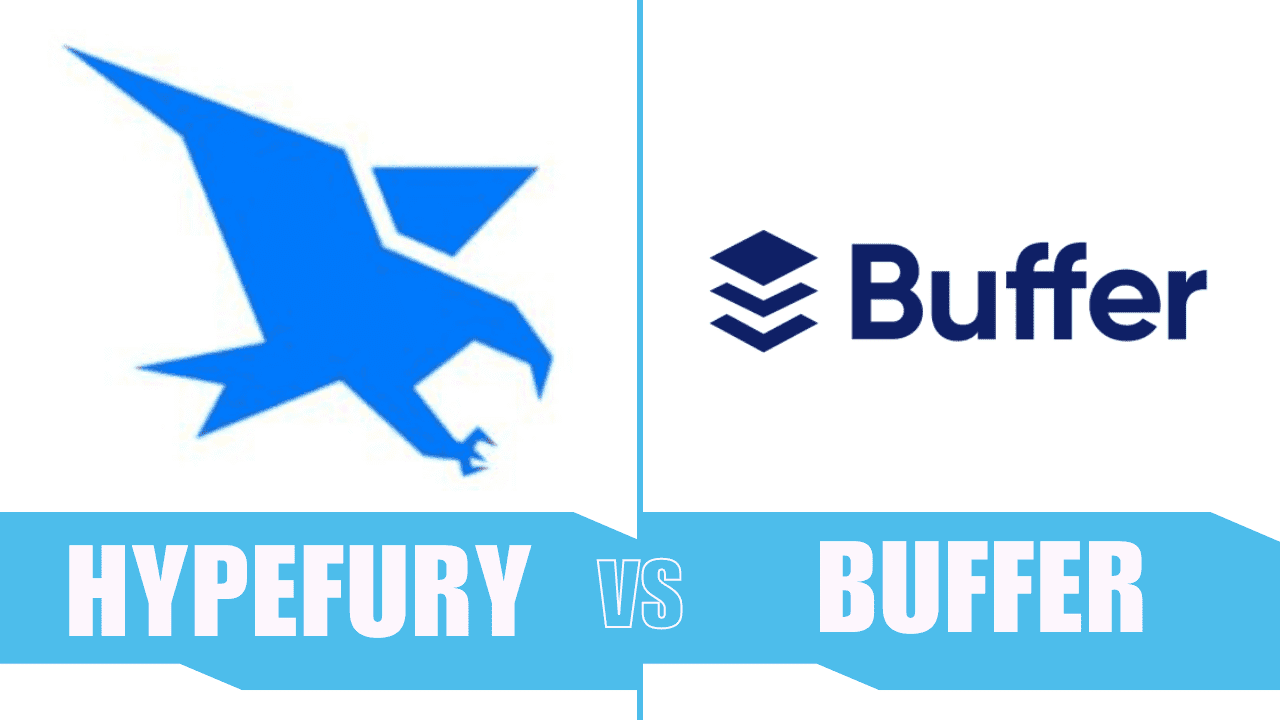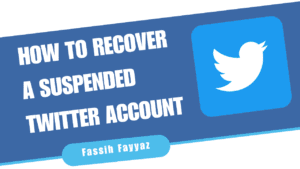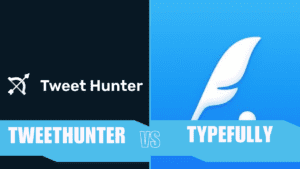In the bustling world of social media, having the right tools can make or break your online presence. Whether you’re an entrepreneur or a social media manager, making an informed choice on which tool to use is essential. In this article, we’ll delve into two popular social media tools: Hypefury and Buffer. We’ll cover their features, benefits, drawbacks, pricing, and user experiences, with a focus on their application for Twitter.
Table of Contents on Hypefury vs Buffer
Understanding Social Media Tools
Social media tools are software designed to help manage your online presence across multiple platforms. They offer various features, including scheduling posts, analyzing engagement metrics, and monitoring your brand’s online reputation. By automating these tasks, social media tools save time, enhance productivity, and help maintain consistent engagement with your audience.
Buffer: An Overview
Buffer is a widely used social media tool that supports multiple platforms, including Twitter, Instagram, and Facebook. It offers a user-friendly interface and a convenient way to schedule posts for future publication. Buffer’s pricing starts at $15 per month or $144 per year.

The main features of Buffer include:
- Platforms Supported – Buffer supports scheduling for Twitter, Facebook, Instagram, LinkedIn, Pinterest. It doesn’t integrate natively with other platforms.
- Scheduling – Easily queue up posts for automatic publishing at your preferred date and time. You can also schedule stories for Instagram.
- Analyze Feature – Get insights into your best posting times, top posts, clicks generated etc. to understand what works.
- Free Plan – Buffer has a free plan for up to 3 social accounts and 10 scheduled posts. Great for getting started.
- Paid Plans – The Pro plan starts at $15/month while the Business plan is $99/month, with more features and team accounts.
- Mobile App – Manage your Buffer right from your phone with iOS and Android apps.
- Browser Extensions – Browser extensions for Chrome and Firefox make it easy to share pages to your Buffer.
- Ideal for Multi-Platform Users – One of Buffer’s biggest advantages is its support for scheduling on Facebook, Instagram etc. making it ideal for multi-platform brands.
However, Buffer has its limitations. While it supports a broad range of platforms, its features are not tailored specifically for Twitter, which could be a deal-breaker for users who want to maximize their Twitter engagement.
Hypefury: An Overview
Unlike Buffer, Hypefury is a tool designed specifically to optimize your Twitter experience. It offers a 14-day free trial, and its pricing starts at $9 per month or $89 per year. Hypefury is a progressive web app (PWA), which means you can access it on your mobile devices even though it doesn’t have a dedicated mobile application.

The key features of Hypefury include:
- Tweet to Plug: This feature plugs a link to a product when a tweet receives a certain number of likes.
- Automatic Retweeting: Automatically retweet your posts based on your preset criteria.
- Evergreen Posts: This feature curates your best posts and auto-retweets them when there are empty slots in your scheduling queue.
- Thread Creation: Craft long, engaging threads with ease.
- Twitter-only – Unlike Buffer, Hypefury is built exclusively for Twitter, allowing it to offer more specialized features.
- Scheduling – Like Buffer, easily schedule tweets in advance and publish them automatically throughout the day or week.
- Auto Retweet – Unique feature that lets you schedule automated retweets of your best content for greater visibility.
- Tweet Long Posts as Threads – Any tweet over 280 characters gets scheduled as a thread automatically.
- 14-Day Free Trial – Test all features for free for 14 days before deciding. No credit card required.
- Paid Plans – Starts at $9/month billed annually or $12 month-to-month after free trial.
- Progressive Web App – Use Hypefury as a web app from your desktop or mobile without installing anything.
- Ideal for “Twitter Power Users” – For those who want to maximize their Twitter presence, Hypefury provides more Twitter-specific tools.
Hypefury’s limitations lie in its exclusive focus on Twitter. If you’re managing multiple social media accounts, you may need to use other tools in conjunction with Hypefury.
Buffer vs Hypefury: A Comparison
When comparing Buffer and Hypefury, your choice depends on your needs. If you’re managing multiple social media accounts, Buffer’s broad platform support and user-friendly interface make it an obvious choice. However, if you want to focus on Twitter and maximize its potential, Hypefury’s Twitter-specific features may be more beneficial.
| Factor | Buffer | Hypefury |
|-|-|-|
| Platforms Supported | Twitter, FB, Instagram, LinkedIn, Pinterest | Twitter Only|
| Scheduling Posts | Yes | Yes |
| Scheduling Threads | No | Yes |
| Auto Retweeting | No | Yes |
| Posting Frequency | 1 account – 100 posts/day
2-5 accounts – 200 posts/day | 200 tweets/day |
| Browser Extensions | Yes | No |
| Mobile Apps | iOS, Android | No Native Apps, Progressive Web App|
| Free Plan | Yes | 14-Day Free Trial|
| Paid Plans Start At | $15/month or $144/year | $9/month or $89/year |
| Ideal For | Multi-platform brands | Twitter-focused users|
As you can see, Buffer supports scheduling on more platforms which is ideal for larger brands active on different social media.
Hypefury is limited to just Twitter, but provides more advanced Twitter-specific features and flexibility at a lower price point.
Now let’s look at how actual users have experienced both tools.
User Experience: Buffer
Customer reviews highlight Buffer’s simplicity and efficiency. Users appreciate its intuitive interface and the ability to manage all social media accounts from one place. However, some users have expressed desires for more advanced analytics.
The main advantage of Buffer’s user experience seems to be its intuitive interface when used for one or two accounts. The mobile apps in particular make it very convenient for casual scheduling.
Managing many accounts requires more time as you switch between them constantly. But overall, simplicity and ease of use is a strength.
User Experience: Hypefury
Users commend Hypefury’s user-friendly interface and innovative Twitter-specific features, especially the automatic retweeting and Evergreen posts features. However, some users have mentioned a desire for support for more social media platforms.
Hypefury’s focus on Twitter-centric features seems to really simplify the scheduling process for users focused just on Twitter. The lack of mobile apps is a drawback currently.
But overall, early users find Hypefury intuitive, quick and tailored nicely to Twitter power users in particular.
Buffer for Twitter: Pros and Cons
Buffer’s strengths lie in its simplicity, multi-platform support, and user-friendly interface. However, its lack of Twitter-specific features and advanced analytics can be a drawback for some users.
Pros
- Supports scheduling threads manually, although not automatically based on length.
- Generous free plan allows you to get started easily.
- Strong analytics features provide insight into best times and top posts.
- Big user base provides reassurance that it is reliable.
- Smooth mobile app experience for on-the-go use.
Cons
- Not many Twitter-exclusive features like auto retweet or thread scheduling.
- Need to constantly switch between accounts to post unique content for each.
- Free plan limits you to 100 posts per day, which can fill up fast.
- Advanced capabilities like video and analytics require a paid plan.
So in summary, Buffer provides an easy way to get started with scheduling Twitter content as part of a wider social media strategy. But power users may find it lacking in more robust Twitter-specific features offered by a tool like Hypefury.
Hypefury for Twitter: Pros and Cons
Hypefury shines with its innovative, Twitter-specific features like Tweet to Plug and Evergreen posts. However, its exclusive focus on Twitter and lack of a dedicated mobile app are potential downsides.
Pros
- Auto-retweeting saves time and increases reach of top posts.
- Handles thread scheduling automatically based on post length.
- Lower pricing plans compared to Buffer.
- Streamlined experience as you only manage one platform.
- Fast and intuitive interface even for heavy use.
- 14-day free trial to test it out.
Cons
- Lacks mobile apps currently and is web-based only.
- Smaller user base means less visibility into historical reliability.
- Fewer educational resources compared to Buffer.
- Analysis features not as deep as Buffer yet.
So Hypefury shines when you want a streamlined focus on growing your Twitter presence. The Twitter-centric features allow heavy users to save time and energy.
Now let’s look at some real-world examples and case studies for both tools in action.
Case Study: How Meditation Brand Thrive Used Buffer
Thrive is a meditation app that wanted to drive more traffic to their landing pages from social media. They leveraged Buffer to schedule Tweets that linked to their blog and product pages.
By scheduling tweets for 8 am when engagement was highest, Thrive increased clicks by 52% and signups by 38%. Buffer’s analytics helped them identify peak times and then schedule content appropriately.
For Thrive, Buffer provided an easy way to identify their best practices on Twitter and implement them using scheduling to grow their business. The ability to queue content related to multiple aspects of their business from one dashboard was a major advantage.
Case Study: How Coach Amanda Used Hypefury to Book Coaching Calls
Amanda is a business coach who offers 1-on-1 consulting sessions with clients. She started using Hypefury to schedule promotional tweets that linked to a Calendly page for booking calls.
With Hypefury, Amanda scheduled tweets to go out 3x per day when engagement was highest. She also used auto retweet to recirculate her most popular posts promoting the booking page.
Within 2 months, Amanda’s booking rate increased by 67%, with 22 booked calls attributed directly to her Twitter activity using Hypefury.
For Amanda, the Twitter-specific features like auto retweet helped her make the most of the platform to drive bookings without constant manual intervention.
The Bottom Line: Buffer or Hypefury for Twitter?
Both Buffer and Hypefury bring unique strengths to the table. If you’re managing multiple social media accounts and need a simple, user-friendly tool, Buffer is a great choice. However, if you’re focusing on Twitter, Hypefury’s innovative features can help you maximize your Twitter engagement
Here are a few key points to summarize the comparison:
- Ease of multi-platform scheduling – Buffer allows you to easily schedule content across Twitter, Facebook, Instagram etc. making it great for broad social media use.
- Twitter-focused features – Hypefury provides more robust Twitter-specific functionality like auto retweet, thread scheduling, Tweet to Plug etc.
- Generous free plan – Buffer has a free plan for basic scheduling needs, while Hypefury offers a 14-day free trial.
- Pricing tiers – Hypefury’s paid plans start at a lower $9/month price point compared to Buffer’s $15/month.
- User experience – Both tools are user-friendly, with Buffer having more established apps while Hypefury is web-based.
Looking at these factors, here are some recommendations on which tool may suit you better:
- If you manage multiple social media platforms, Buffer is likely the best choice. The unified scheduling dashboard saves time.
- For users focused just on maximizing growth on Twitter, Hypefury provides more robust Twitter-specific features.
- If budget is a concern, Hypefury is more affordable especially for solo users.
- Larger teams may benefit more from Buffer’s collaboration capabilities.
Assess your specific needs and priorities to determine if an all-in-one tool like Buffer or a Twitter-centric platform like Hypefury is a better fit. Optimizing your Twitter presence is important, so choose the tool that provides the right features for your goals.
Conclusion
After comparing Hypefury and Buffer, it’s clear that both have their strengths and weaknesses. Your choice will ultimately depend on your specific needs and objectives. If you’re looking to manage multiple social media platforms with ease, Buffer would be a suitable choice. On the other hand, if you’re focused on enhancing your Twitter presence with unique, Twitter-specific features, Hypefury might be the better option for you. Whichever tool you choose, remember that consistency, creativity, and engagement are key to social media success.
So, which tool will you choose for your Twitter management: Buffer or Hypefury? Consider your needs, evaluate your options, and make an informed decision. Happy tweeting! Don’t Forget To Drop a Follow @FassihFayyaz.




